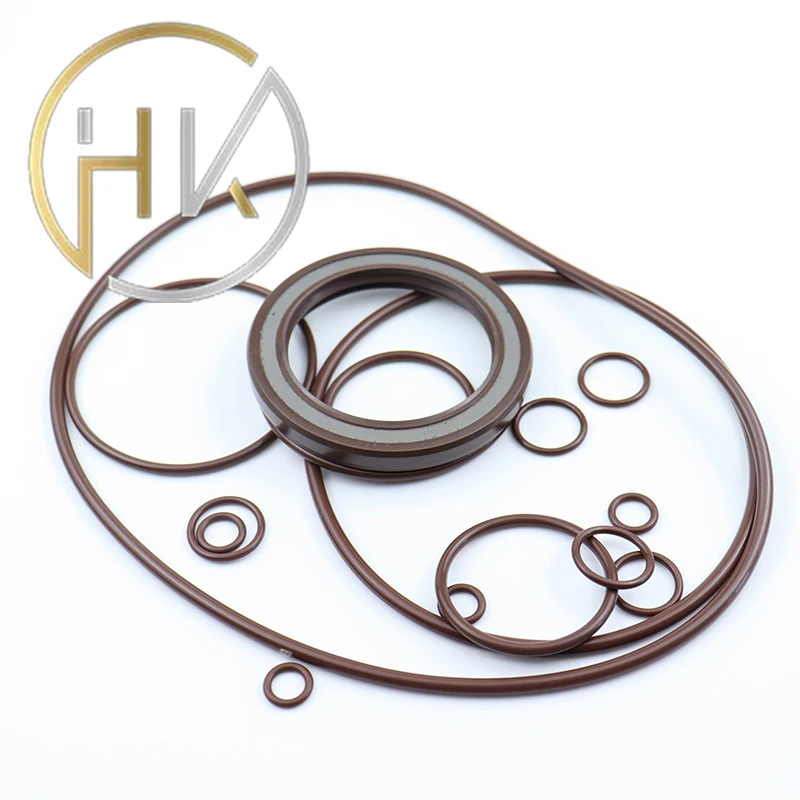Dec . 04, 2024 09:40 Back to list
hydraulic ram seal replacement
Hydraulic Ram Seal Replacement A Comprehensive Guide
Hydraulic rams are essential components in various machinery, converting hydraulic energy into mechanical force. Commonly used in construction, agriculture, and marine applications, these systems require maintenance and, at times, replacement of parts, particularly the seals. This article provides a detailed overview of hydraulic ram seal replacement, emphasizing its importance, the signs of wear, the replacement process, and tips for ongoing maintenance.
Understanding Hydraulic Ramps and Their Seals
Hydraulic rams operate by utilizing pressurized fluid to generate motion. Seals in these systems play a crucial role in maintaining pressure and preventing fluid leakage. Over time, seals can wear out due to various factors, including age, exposure to harsh chemicals, and operational stress. Regular inspection of these seals is crucial for ensuring optimal performance and preventing costly breakdowns.
Signs Your Seals Need Replacement
Recognizing when a seal requires replacement is vital for maintaining the integrity of your hydraulic ram. Here are the common signs of seal wear
1. Fluid Leakage One of the most obvious indicators is visible fluid leakage around the ram. If you notice hydraulic fluid pooling around the base or dripping from the ram, it’s time to inspect and potentially replace the seals.
2. Reduced Performance If the hydraulic ram is not functioning as efficiently as it previously did, this could indicate seal degradation. A decrease in lifting power or slow response times are key indicators of potential seal failure.
3. Unusual Noises Elevated noise levels during operation can suggest that the seals are not functioning properly. Scraping, grinding, or excessive vibration can signal that seals are failing or that there are other mechanical issues at play.
4. Erratic Operation If the ram operates inconsistently, extending or retracting at unexpected rates, it may be due to compromised seal integrity.
The Replacement Process
Replacing hydraulic ram seals can be a straightforward task if done correctly. Below is a step-by-step guide to assist you in this process
1. Preparation and Safety Before beginning, ensure the machine is powered down and depressurized. Safety goggles and gloves should be worn to protect against potential hazards, such as hydraulic fluid.
2. Disassemble the Ram Carefully remove the hydraulic ram from its mounting. Use appropriate tools to disassemble the unit, and keep all components organized to facilitate reassembly.
hydraulic ram seal replacement

3. Remove Old Seals Take out the worn seals using a seal removal tool. Be cautious not to damage the ram’s housing during this process, as scratches or dents can lead to further leaks.
4. Clean the Components Thoroughly clean all parts of the ram. Use a suitable solvent to remove old fluid and debris. Ensuring a clean surface is critical for the effective application of new seals.
5. Install New Seals Once the components are cleaned and dried, carefully install the new seals. Ensure they are seated properly within their grooves. Use a sealant if required, adhering to the manufacturer’s specifications.
6. Reassemble the Ram Once the seals are in place, reassemble the hydraulic ram. Ensure all fasteners are tightened appropriately.
7. Test the System Finally, reattach the ram and pressurize the system. Monitor for any leaks and check the performance of the ram to ensure everything is functioning smoothly.
Maintenance Tips
To prolong the lifespan of your hydraulic seals, consider implementing the following maintenance tips
- Regular Inspections Conduct routine checks for signs of wear or fluid leakage. Early detection can save you time and money.
- Proper Fluid Levels Ensure that the hydraulic fluid is at appropriate levels and is clean. Contaminated or inadequate fluid can lead to seal degradation.
- Use Quality Components When replacing seals, always opt for high-quality products that meet or exceed OEM specifications. This attention to detail can significantly enhance durability and performance.
- Follow Manufacturer Guidelines Adhere to the manufacturer’s maintenance schedule and guidelines for your specific hydraulic ram to optimize its functionality.
Conclusion
Replacing seals in hydraulic rams is essential for maintaining optimal performance and preventing fluid leaks. By recognizing the signs of seal wear, understanding the replacement process, and implementing preventive maintenance, you can ensure longevity and efficiency in your hydraulic systems. Whether you are a seasoned professional or a DIY enthusiast, approaching seal replacement with precision will yield positive outcomes in your machinery’s performance.
-
TCN Oil Seal Metal Ring Reinforcement for Heavy Machinery
NewsJul.25,2025
-
Rotary Lip Seal Spring-Loaded Design for High-Speed Applications
NewsJul.25,2025
-
Hydraulic Cylinder Seals Polyurethane Material for High-Impact Jobs
NewsJul.25,2025
-
High Pressure Oil Seal Polyurethane Coating Wear Resistance
NewsJul.25,2025
-
Dust Proof Seal Double Lip Design for Construction Equipment
NewsJul.25,2025
-
Hub Seal Polyurethane Wear Resistance in Agricultural Vehicles
NewsJul.25,2025
-
The Trans-formative Journey of Wheel Hub Oil Seals
NewsJun.06,2025
Products categories
















